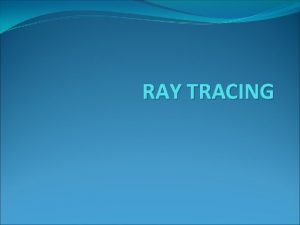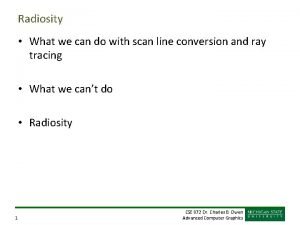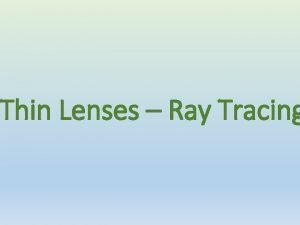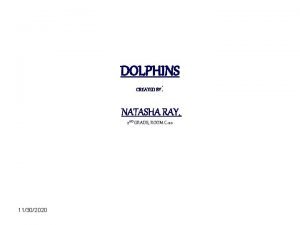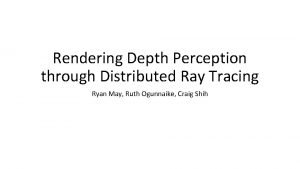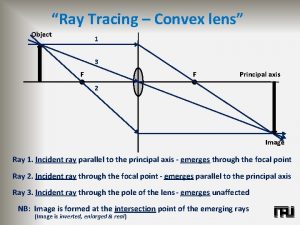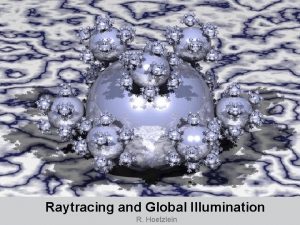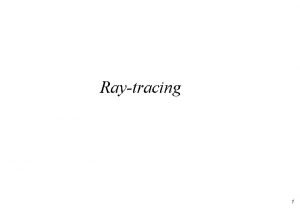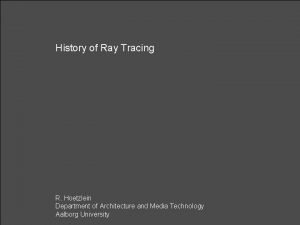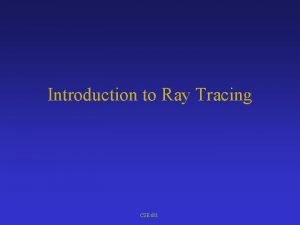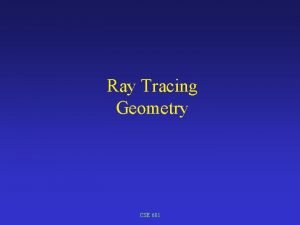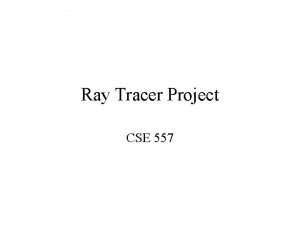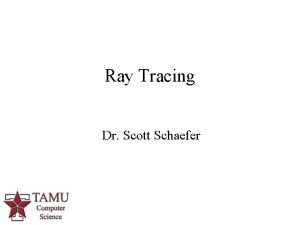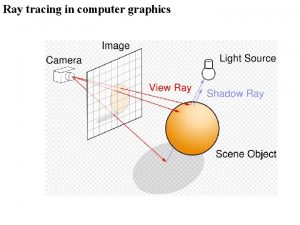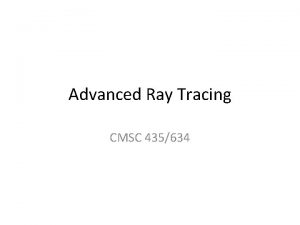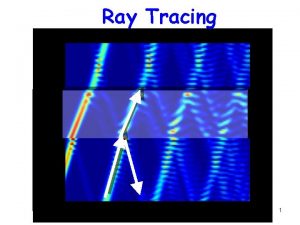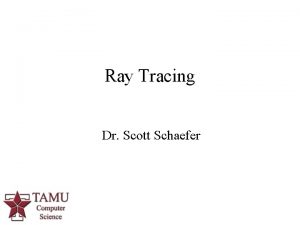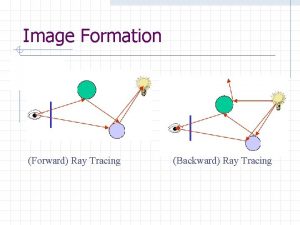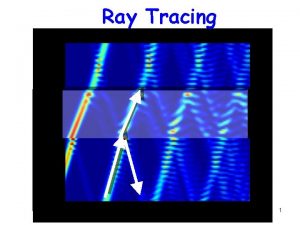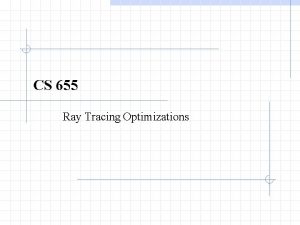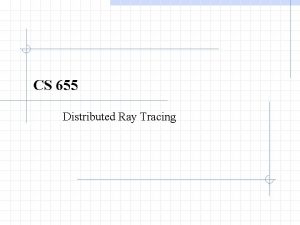Ray Tracing Geometry CSE 681 Camera Setup CSE














- Slides: 14

Ray Tracing Geometry CSE 681

Camera Setup CSE 681

Camera Setup “up” vector n v w View direction u Can be formed as cross product of view vector and up vector CSE 681

Camera Setup =? Tan(q/2) = yres*pixel. Height/2 N =N pixel. Height = 2*Tan(qy/2) *N/yres pixel. Width = 2*Tan(qx/2) *N/xres CSE 681

Screen Placement How do images differ if the resolution doesn’t change? CSE 681

Pixel Calculation Tan(q/2) = yres*pixel. Height/2 N pixel. Height = 2*Tan(qy/2) *N/yres pixel. Width = 2*Tan(qx/2) *N/xres Pixel Aspect. Ratio = pixel. Width/pixel. Height Coordinate (in u, v, n space) of upper left corner of screen = ? CSE 681

Pixel Calculation Coordinate (in u, v, n space) of upper left corner of screen = ? Assume virtual screen is one unit away (N=1) in w direction Eye + w - (xres/2)*Pixel. Width*u + (yres/2)*Pixel. Height *v CSE 681

Pixel Calculation Coordinate (in u, v, n space) of upper left pixel center = ? Eye + w - (xres/2)*Pixel. Width*u + (yres/2)*Pixel. Height *v + (pixel. Width/2)*u - (pixel. Height/2)*v CSE 681

Interate through pixel Centers pixel. Center = scanline. Start = Eye + w(xres/2)*Pixel. Width*u + (yres/2)*Pixel. Height *v + (pixel. Width/2)*u (pixel. Height/2)*v pixel. Center += pixel. Width * u scanline. Start -= pixel. Height * v CSE 681

Organization of Ray Tracer For each pixel { Form ray from eye through pixel distancemin = infinity For each object { If (distance=intersect(ray, object)) { If (distance< distancemin) { closest. Object = object distancemin = distance } } CSE 681

Organization of Ray Tracer If (distancemin > infinity. Threshold) pixel. Color = background color else pixel. Color = color of object at distancemin along ray d eye ray object CSE 681

Ray-Sphere Intersection - geometric Knowns C, r Eye Ray t = |C-eye| d eye d+k = (C-eye) · Ray k r s t 2= (d+k) 2 + s 2 C t CSE 681 r 2 = k 2+ s 2

Ray-Sphere Intersection - algebraic x 2 + y 2 + z 2 = r 2 p = eye + t*Ray Substitute definition of p into first equation: (eye. x+ t *ray. x) 2 + (eye. y+ t *ray. y)2 + (eye. z+ t *ray. z) 2 = r 2 Expand squared terms and collect terms based on powers of d: A* t 2 + B* t + C = 0 CSE 681

Determine Color Use z-component of normalized normal vector FOR LAB #1 Clamp to [0. 3. . 1. 0] N object. Color*Nz What’s the normal at a point on the sphere? ray eye CSE 681
 Ray tracing and ray casting
Ray tracing and ray casting Cs 681
Cs 681 Round 54 681 to the nearest ten thousand
Round 54 681 to the nearest ten thousand 681 complex inc
681 complex inc 681 complex inc
681 complex inc Ray tracing vs radiosity
Ray tracing vs radiosity Thin lens ray tracing
Thin lens ray tracing Dolphin ray tracing
Dolphin ray tracing Covexity
Covexity Ray tracing convex lens
Ray tracing convex lens Raytrace technologies
Raytrace technologies Ray tracing vs rasterization
Ray tracing vs rasterization Ray tracing lenses
Ray tracing lenses Recursive ray tracing
Recursive ray tracing Thomas hoetzlein
Thomas hoetzlein
